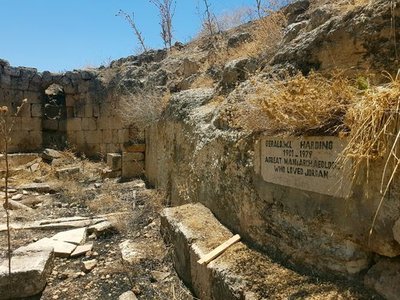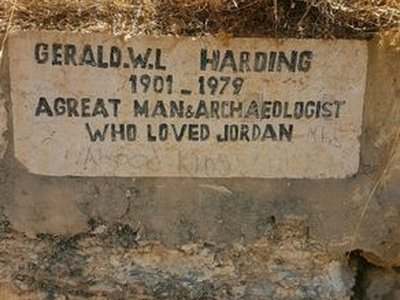Gerald Lankester Harding's Burial Place


Within one of the world’s
most spectacular ancient sites lies a small, humble tomb. Unlike most tombs in such sites, it does not contain a long-dead monarch, emperor, or any other character from the distant past. Instead, it houses a 20th-century man whose passion for ancient history and its protection earned him a spot overlooking the site of his former work.
Gerald Lankester Harding, or G.L. Harding, was born on December 8, 1901, in Tientsin,
China
. After a brief time in
Singapore
, he ventured to the
United Kingdom
in 1913 and eventually fell into the world of archaeology, joining his first expedition to Palestine in 1926.
Harding’s influence on
Jordan
should not be underestimated. He was responsible for founding the Archaeological Museum in
Amman
and the still-running journal
The Annual of the Department of Antiquities of Jordan
. He also published
The Antiquities of Jordan
, an overview of the many archaeological sites of Jordan that remained the most popular guidebook to Jordan for decades.
Harding died on February 11, 1979, in
London
, and had previously requested to be interred at the Jerash Archaeological Site, where he worked. The Kingdom of Jordan honored his request, and his ashes were sent to be buried overlooking the site he spent so much time protecting.
His remains were interred at a spot called the Mortuary Church, which dates back to between 600 and 749 and is surrounded by a number of small tombs. Harding’s memorial is a simple, peaceful place in an incredible ancient Roman site that he is partially responsible for excavating and maintaining. After a life devoted to the ancient world, Harding himself has become part of the storied history of its ruins, and will forever rest among them.